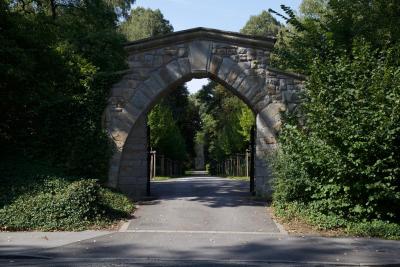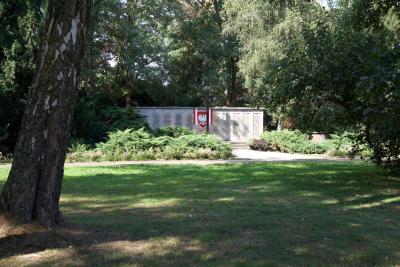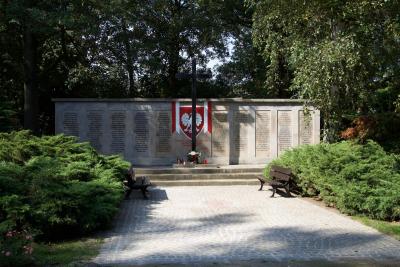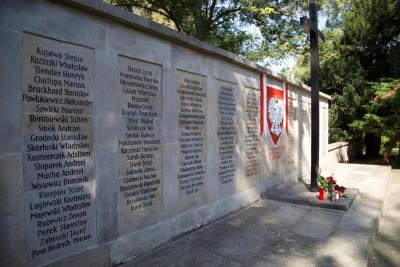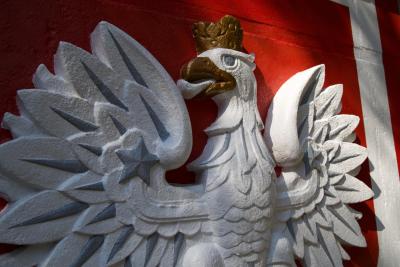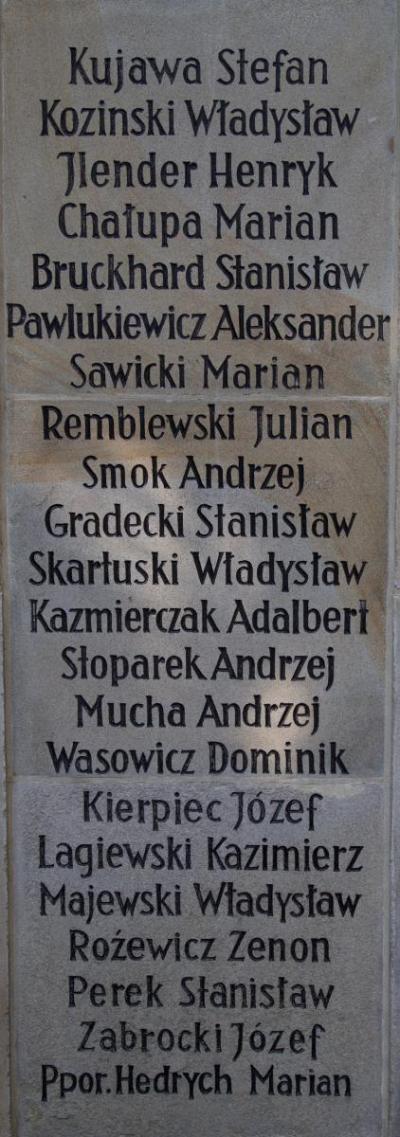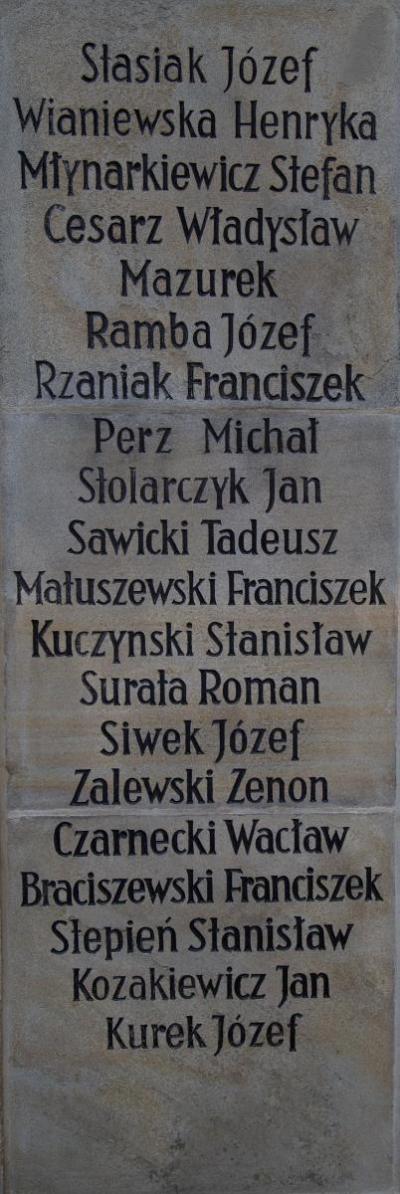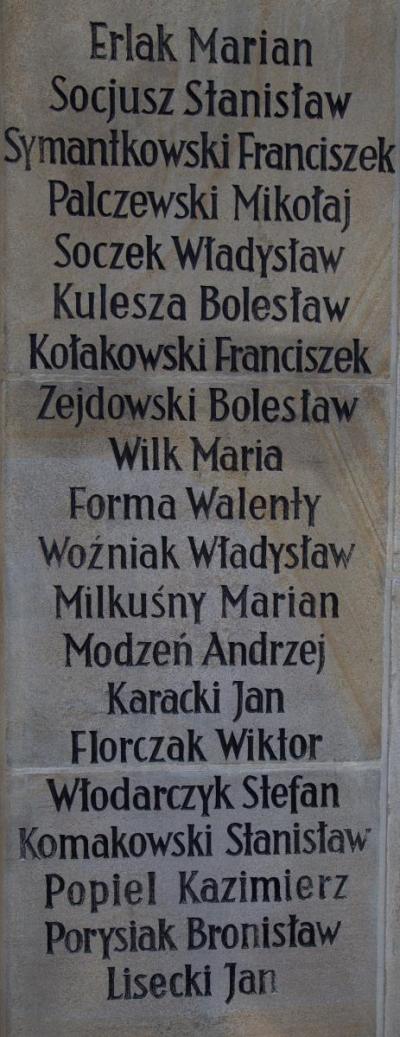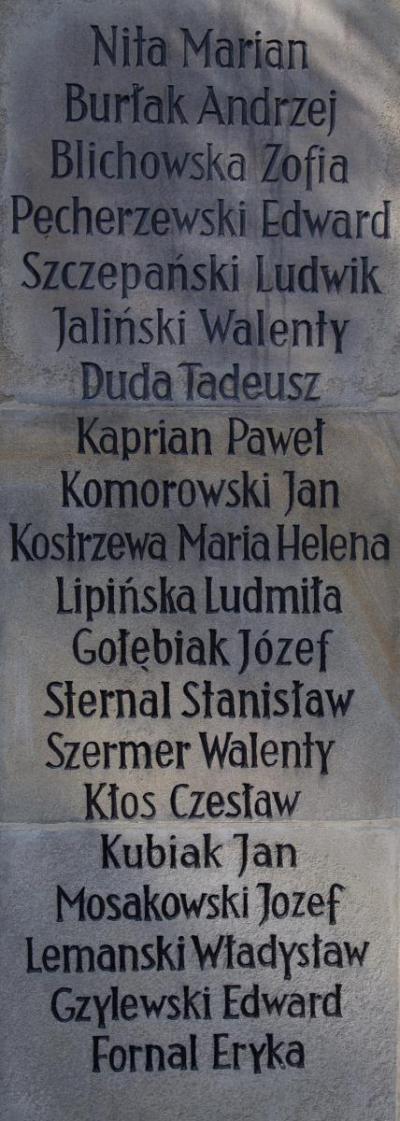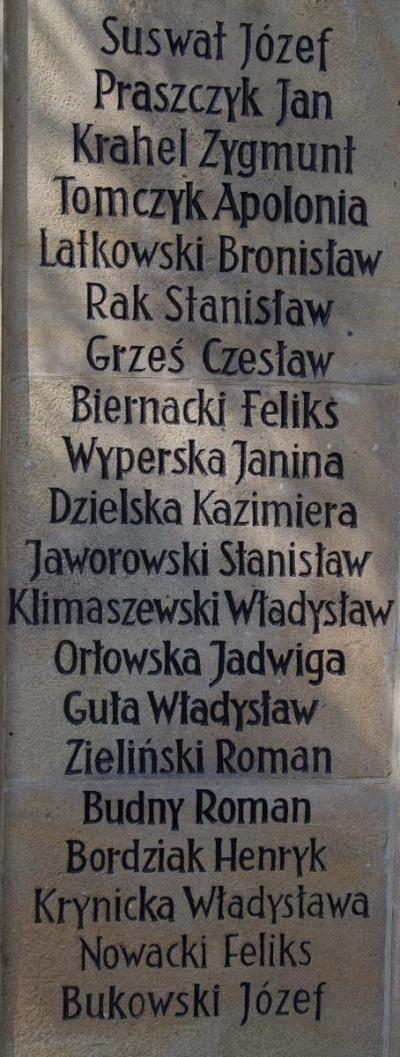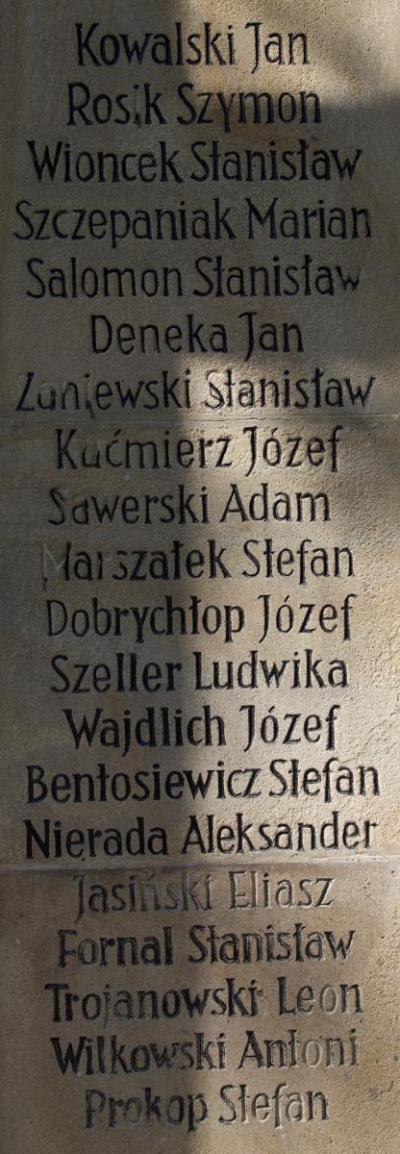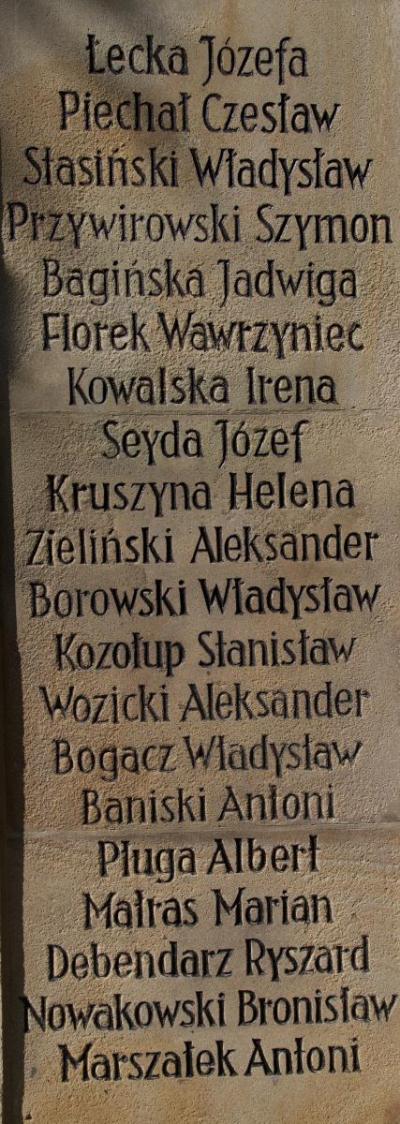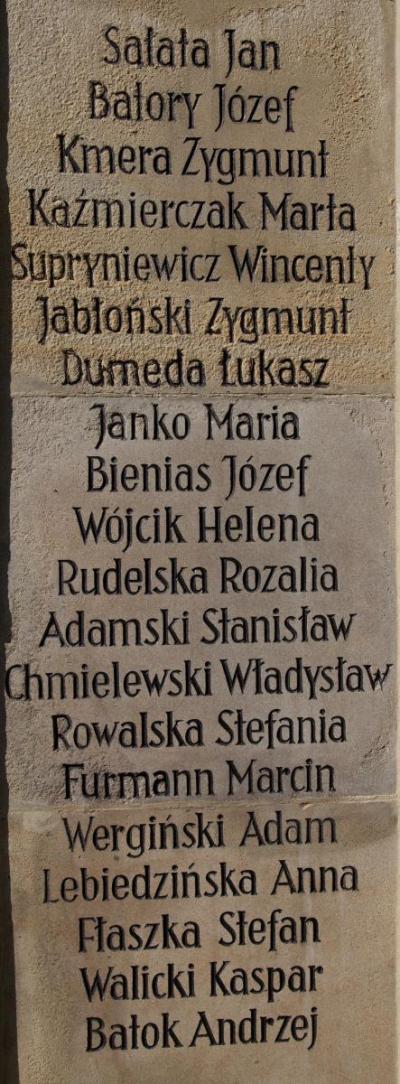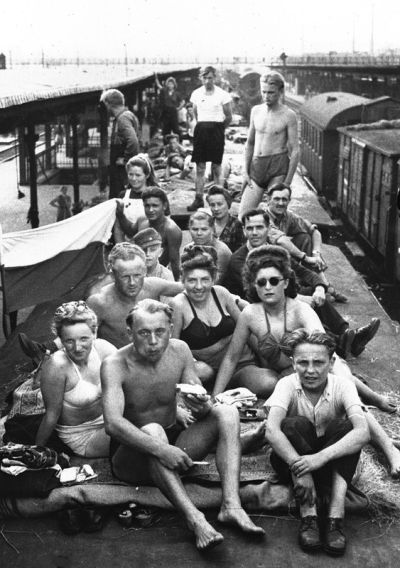The Polish memorial in a cemetery in Dortmund

In many places displaced persons decided to set up special cemeteries or erect a monument in memory of the dead. For example, the inhabitants of the Durzyn camp inWildflecken – for a time it contained more than 20,000 inhabitants – decided to set up a Polish cemetery on the edge of the camp site. Cemeteries, memorial sites and memorials were also set up in other large camps like those in Bergen-Belsen and Flossenbürg.
Polish DPs living in the comparatively small camp in Dortmund also considered erecting a memorial site. Camp No. 8 was situated in the former artillery barracks in Dortmund, near the main cemetery.
As a result the planning committee decided to build a memorial in the main cemetery. It took the form of a long sandstone wall with then sections containing the names of the Poles who had “fallen” in Dortmund between 1939 and 1945. At the centre of the memorial stood thePolish Eagle and a three-metre high cross directly in front of the Polish coat of arms.
The memorial was officially consecrated on 7thApril 1946. The invitation to the official opening ceremony told of the many difficulties that had to be overcome during the planning and the eight month period of construction.
A service in the camp chapel was followed by a march to the adjacent cemetery. At the monument speeches were given by the head of the Polish camp, the priest and the chairman of the camp council. These were accompanied by songs by a Polish school choir.
After the official opening and the laying of a wreath the memorial was handed over to the Dortmund Polonia, thereby sealing the gap between the so-called Ruhr Poles and those Poles who had been transported to Germany during the war and were now temporary displaced persons in the Ruhrgebiet.
In reality relationships between the remains of old Polonia in the Ruhrgebiet and Polish displaced persons were not always easy. Many of the Ruhr Poles were treated by the Allied authorities as long-time residents and as a result they received far less support and rations than their compatriots in the DP camps. This resulted in feelings of envy and incomprehension. Some of the Poles who had been living in Germany before the war attempted to claim they were displaced persons in order to benefit from better rations and raise their chances of being able to emigrate abroad. When the DPs handed over permanent responsibility for the memorial to the Poles resident in Dortmund they made it clear that they only regarded themselves as temporary residents in Germany and that they relied on the local Polish community to continue its existence. Hence the memorial in honour of the victims of the war and forced labourers has passed into the hands of the Ruhr Poles for ever.
Dietmar Osses, September 2018
